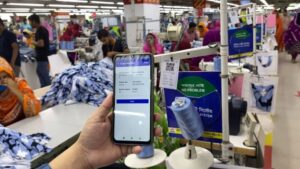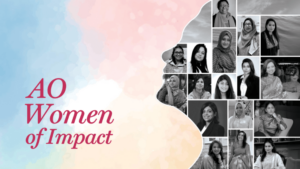Vietnam’s garment industry is growing fast and it’s a wake-up call for Bangladesh to pull up its socks and set our house in order. Vietnam would soon surpass Bangladesh to become world’s second-largest garment exporter.
As the saying goes, your competitor is your best teacher. We therefore need to learn important lessons from Vietnam to stay competitive and keep growing.
Productivity, Innovation and FTAs driving growth
One of the biggest differences between us and Vietnam is productivity. Their workers are more efficient because they invest heavily in education and skill development. Even though Vietnam’s garment industry has only two million workers, compared to our four million, their export value is nearly the same as ours. That’s a clear sign that efficiency matters. The reason for our low productivity is lack of training, low wages and poor working conditions.
Our investment in R&D within the RMG sector is very low – with factories allocating only about two per cent of their total expenditures. Vietnam has a major strength in high value products and this is a direct result of the investment they made in textile and apparel education, training and new industry technologies. Another area where Vietnam has done well is stitching Free Trade Agreement (FTAs) with diverse countries. For instance, Vietnam has 17 active Free Trade Agreements (FTAs), including the EU-Vietnam Free Trade Agreement (EVFTA); Comprehensive and Progressive Agreement for Trans-Pacific Partnership (CPTPP); UK-Vietnam Free Trade Agreement (UKVFTA); US-Vietnam Bilateral Trade Agreement (BTA); ASEAN Free Trade Area (AFTA); ASEAN-China Free Trade Area (ACFTA); ASEAN-AustraliaNew Zealand Free Trade Area (AANZFTA); Vietnam-South Korea Free Trade Agreement (VKFTA); Vietnam-Japan Economic Partnership Agreement (VJEPA); Vietnam-India under ASEAN (AIFTA); VietnamEurasian Economic Union Free Trade Agreement (VN-EAEU FTA); Regional Comprehensive Economic Partnership (RCEP); Vietnam-Cuba Trade Agreement; Vietnam-Chile Free Trade Agreement (VCFTA); ASEAN-Hong Kong, China Free Trade Agreement (AHKFTA); Vietnam-Israel Free Trade Agreement (VIFTA); and Vietnam-UAE under Comprehensive Economic Partnership Agreement (CEPA).
In contrast, Bangladesh has far fewer trade agreements. The country is part of only a handful of FTAs, including the Asia-Pacific Trade Agreement (APTA); Trade Preferential System of the Organization of the Islamic Conference (TPS-OIC); Preferential Tariff Arrangement-Group of Eight Developing Countries; South Asian Free Trade Area (SAFTA); and the Bangladesh-Bhutan Preferential Trade Agreement.
While negotiations for FTAs with Japan and Singapore are underway, there’s also a need for Bangladesh to diversify its export base to ensure sustainable growth.
Strengthening Logistics and Attracting FDI
Bangladesh has a comprehensive supply chain for the garment industry – from fabric production to cutting, sewing, packaging and shipping – that simplifies sourcing for international businesses. Yet, to surpass Vietnam in terms of supply chain, we must work on the following issues: underdeveloped transport and logistics infrastructure, poor quality of roads and railways, uneven quality control, complex and time-consuming administrative procedures, lack of uniformity and transparency in the legal system, recent civil unrest and political instability, production of own world-class ingredients for making garment finished products to maintain a more economic supply chain, etc.
Also, gas shortage in our country has held back industrial growth and energy security. Bangladesh can increase its liquefied natural gas (LNG) imports and enhance LNG infrastructure to ensure a reliable supply and can extensively search for new gas fields. The use of alternative energy options like solar power, wind and hydropower can also reduce dependence on gas.
In terms of FDI too (Foreign Direct Investment), Vietnam is far ahead of us. In 2024, Vietnam reported over US $ 38.2 billion in FDI, whereas Bangladesh received US $ 1.46 billion in same year. I would like to highlight that FDI not only depends on ‘ease of doing business’ or GDP growth rates but also on political stability. Bangladesh has always carried a high degree of political instability that has deterred many investors from considering making their investments here.
We must strive to create a stable political environment while also addressing good governance and corruption issues.
Sustainability and compliance is another area where we must work harder. Vietnam has been fulfilling all environmental and regulatory compliances to attract many more buyers in the past few years.
| Bangladesh can increase its liquefied natural gas (LNG) imports and enhance LNG infrastructure to ensure a reliable supply and can extensively search for new gas fields. The use of alternative energy options like solar power, wind and hydropower can also reduce dependence on gas. |
Diversification and Value Addition
Vietnam exports a wide range of garments to the USA and other countries, including man-made fibre (MMF) clothing, cotton knit shirts, blouses, women’s trousers, men’s knit shirts, dresses and women’s coats. These are amongst their top 10 product categories. On the other hand, the export produce of Bangladesh is limited to 5 types of basic product lines such as trousers, T-shirts, sweaters, shirts and jackets. Therefore we must think of diversifying the product lines.
We can also consider Vietnam’s export of high-quality blazers, woven formal shirts, trousers and outerwear to countries with an aged population. We have less number of blazer factories in Bangladesh compared to Vietnam. However, Vietnam produces large quantities of expensive sportswear. As a result, the average price of Vietnamese garment items is quite high. Whereas, Bangladesh mostly produces basic and low-price segment items.
We are also lagging behind in the production of technical and smart clothing items, due to which we couldn’t tap into the global market for hospital clothing, school uniforms and armed forces, worth billions of dollars.
We must leverage our existing resources and expertise to gain cost advantages by producing a variety of high-quality products.
This is especially important because Bangladesh will soon move out of the Least Developed Country (LDC) status. When this happens, we may lose special duty-free benefits under the European Union’s Everything But Arms (EBA) scheme. This could make it harder for our apparel exports to grow.
Last but not the least, strengthening our position as a top exporting nation also requires effective collaboration amongst the Government, BGMEA and industry leaders. By adopting best practices, fostering innovation and ensuring policy support, we can sustain our longstanding reputation and drive further growth in the sector.
Akib Rahman is Director of Hams Group. He is looking after the Operations and Business Development of the company. The Hams Group, established in 1994, is one of the leading vertical textile manufacturers in Bangladesh, serving major clients such as H&M, M&S, Next, New Look and Kohl’s.







